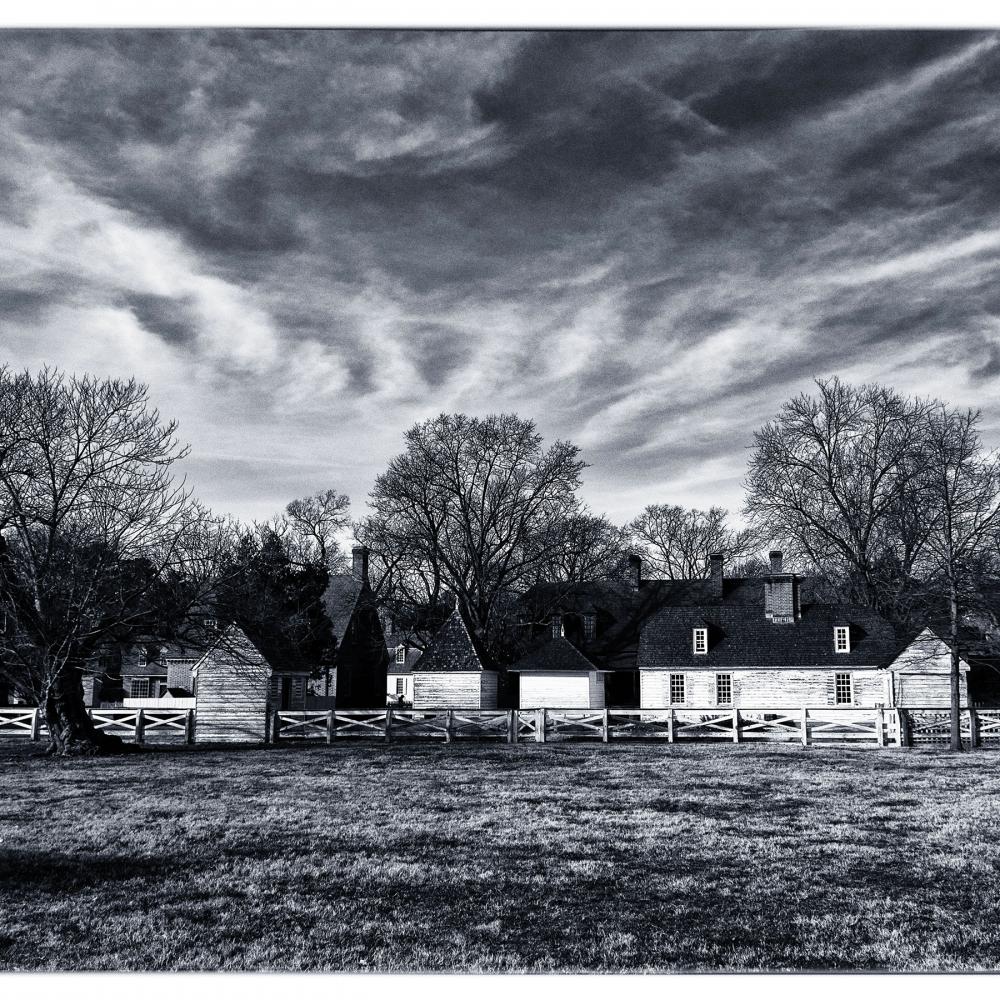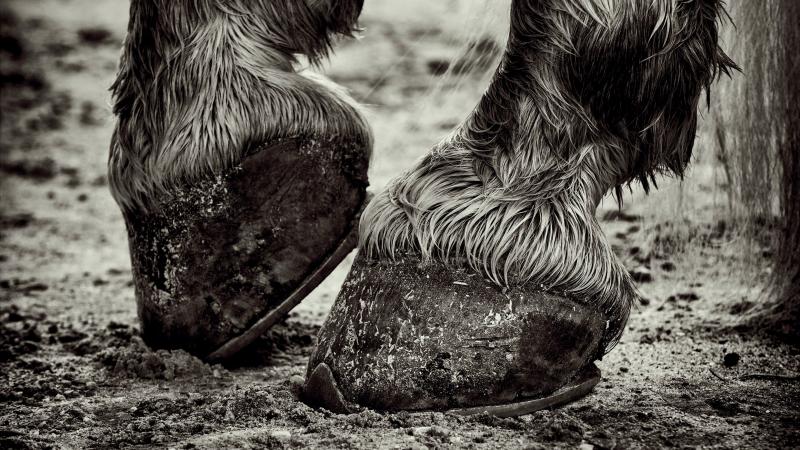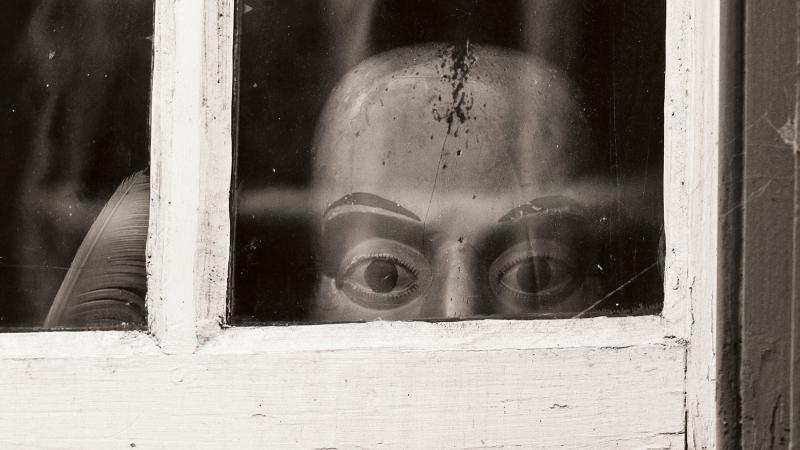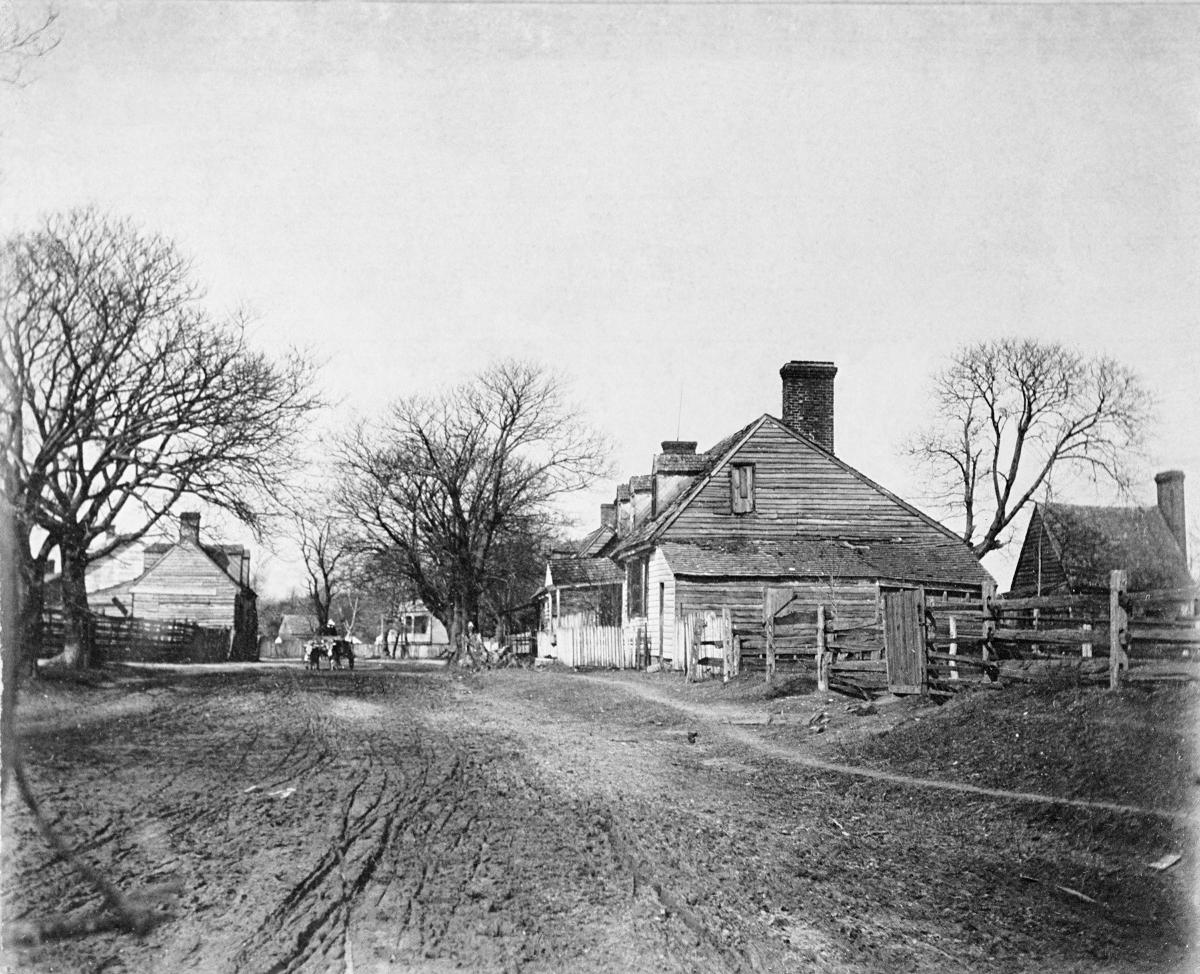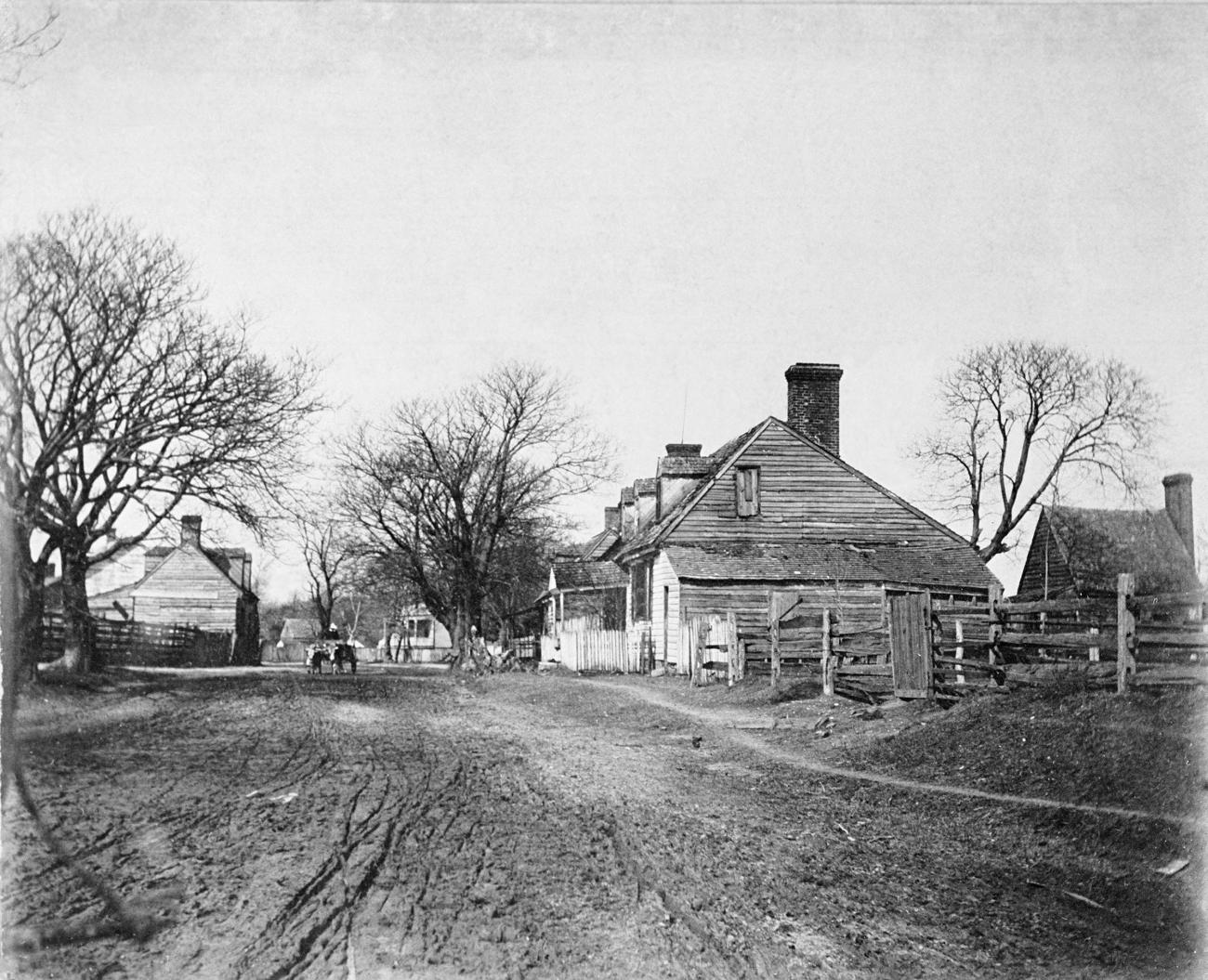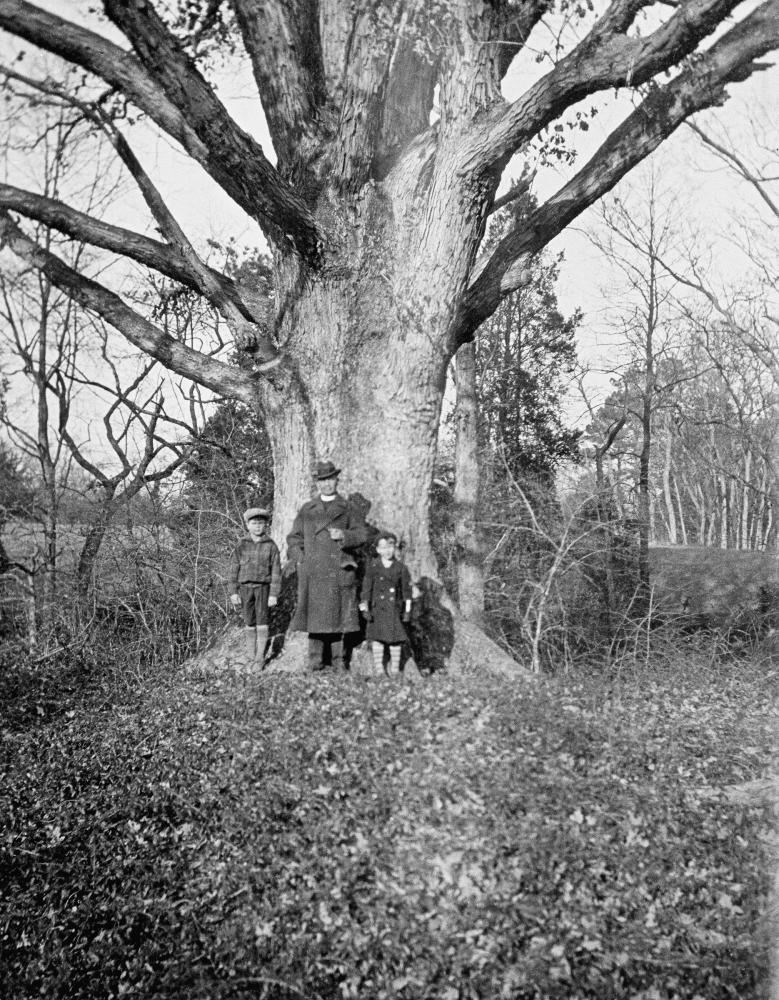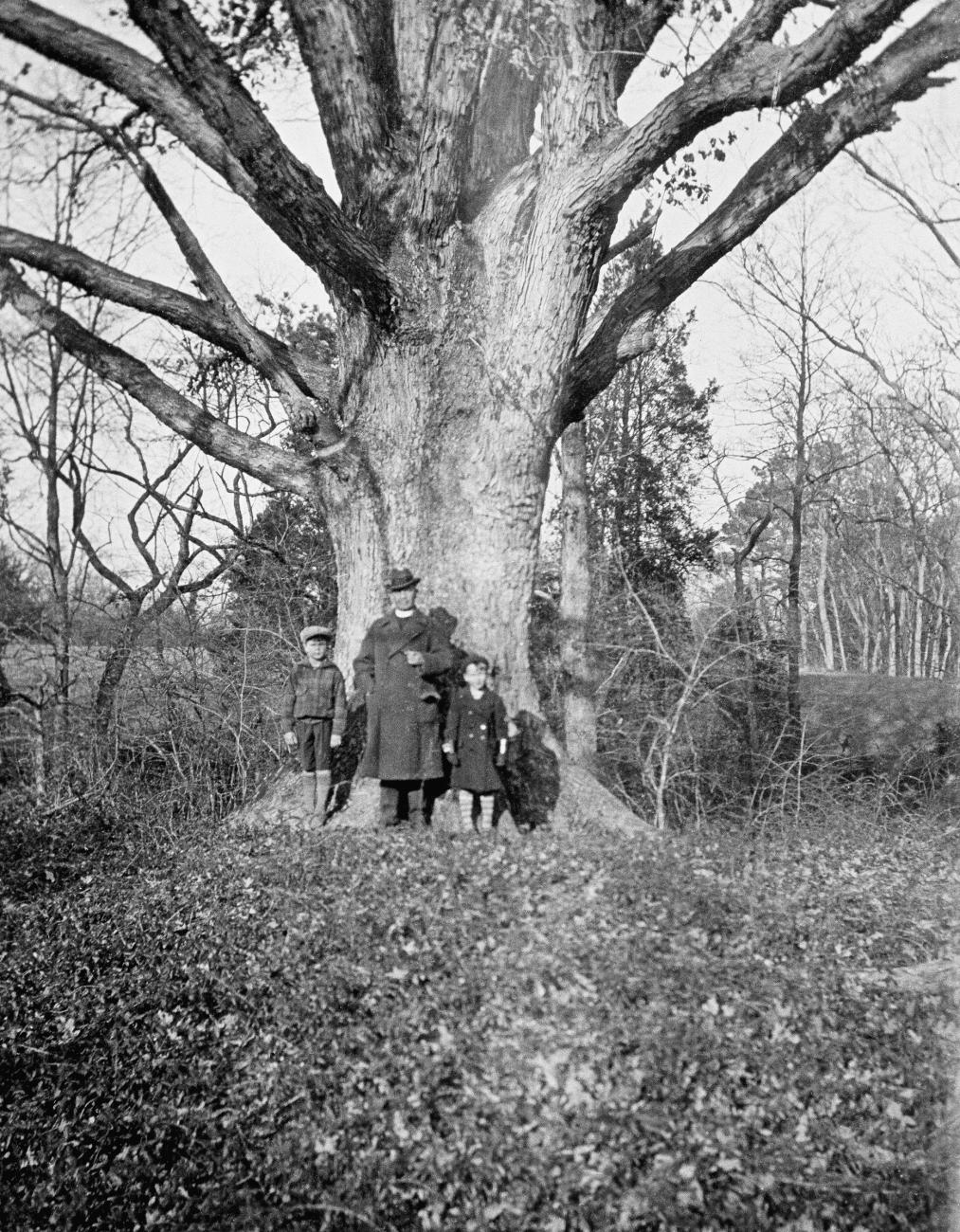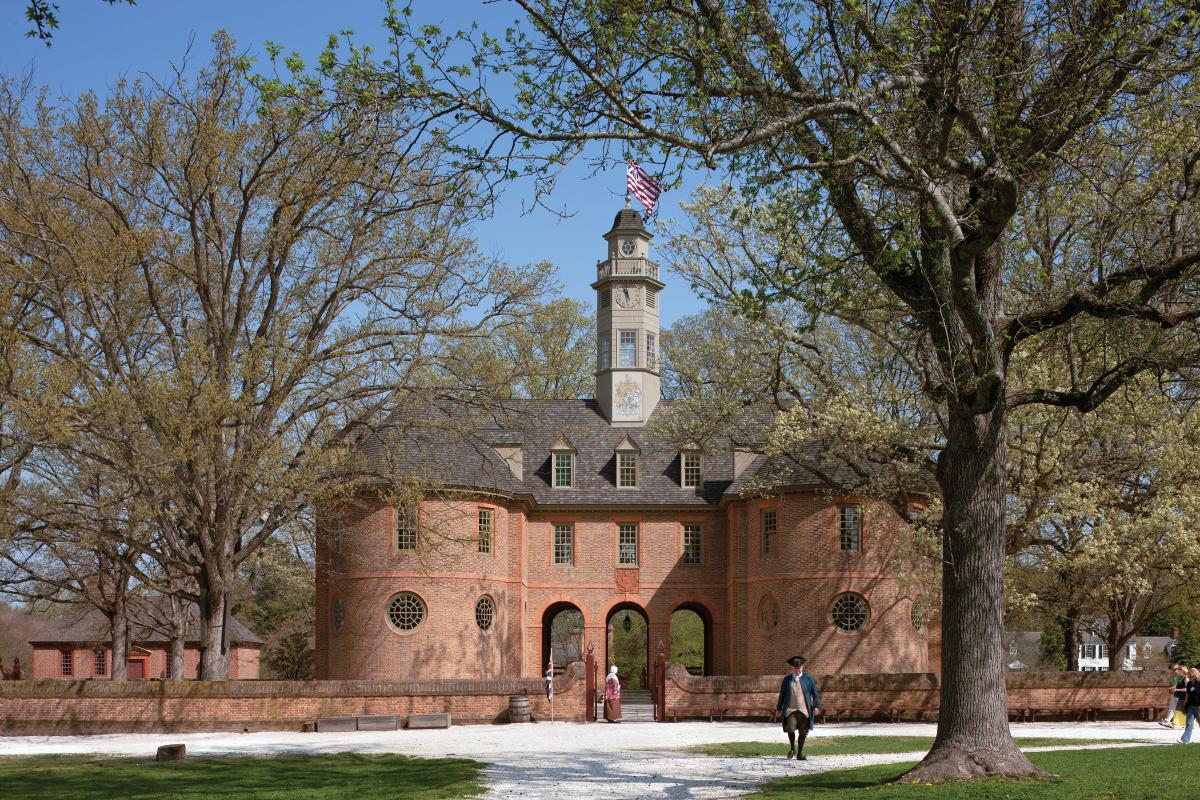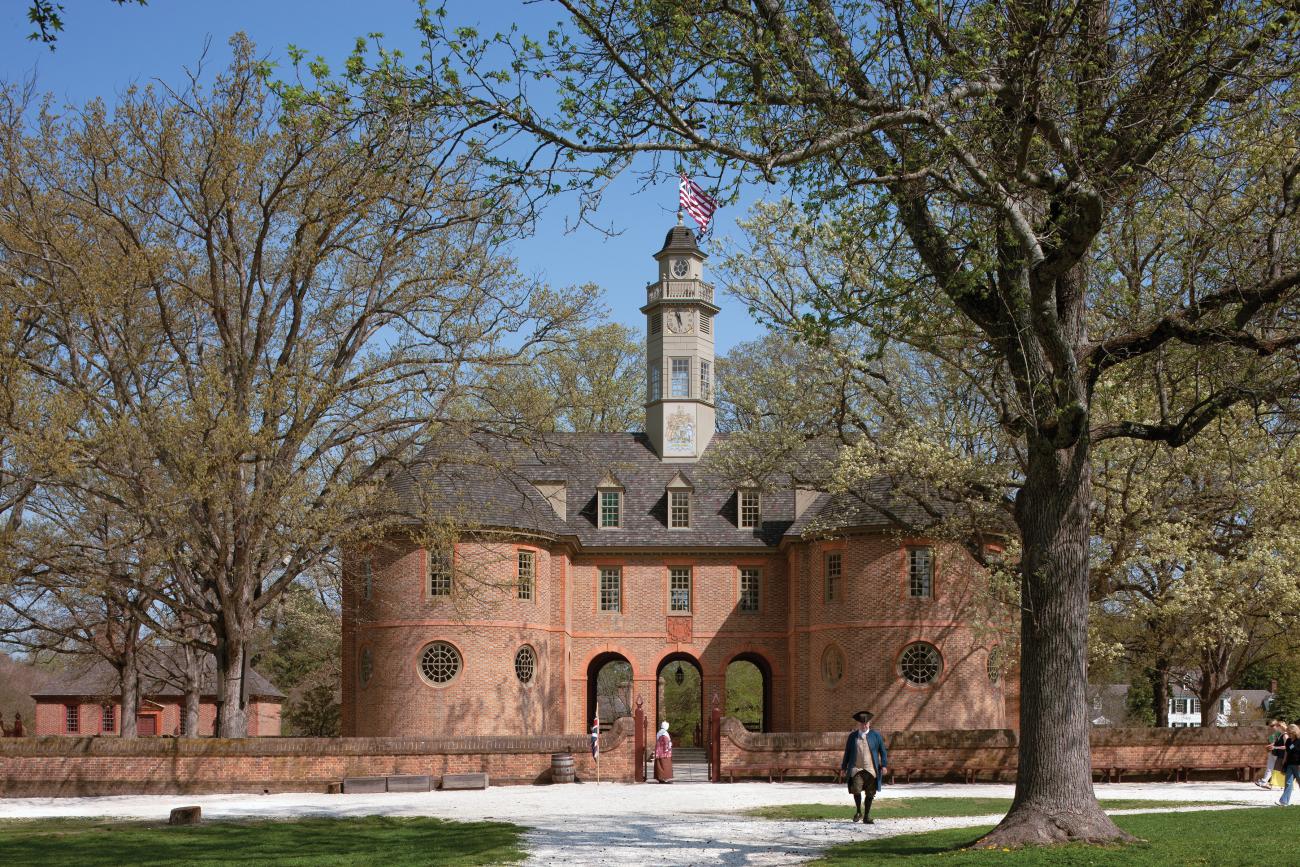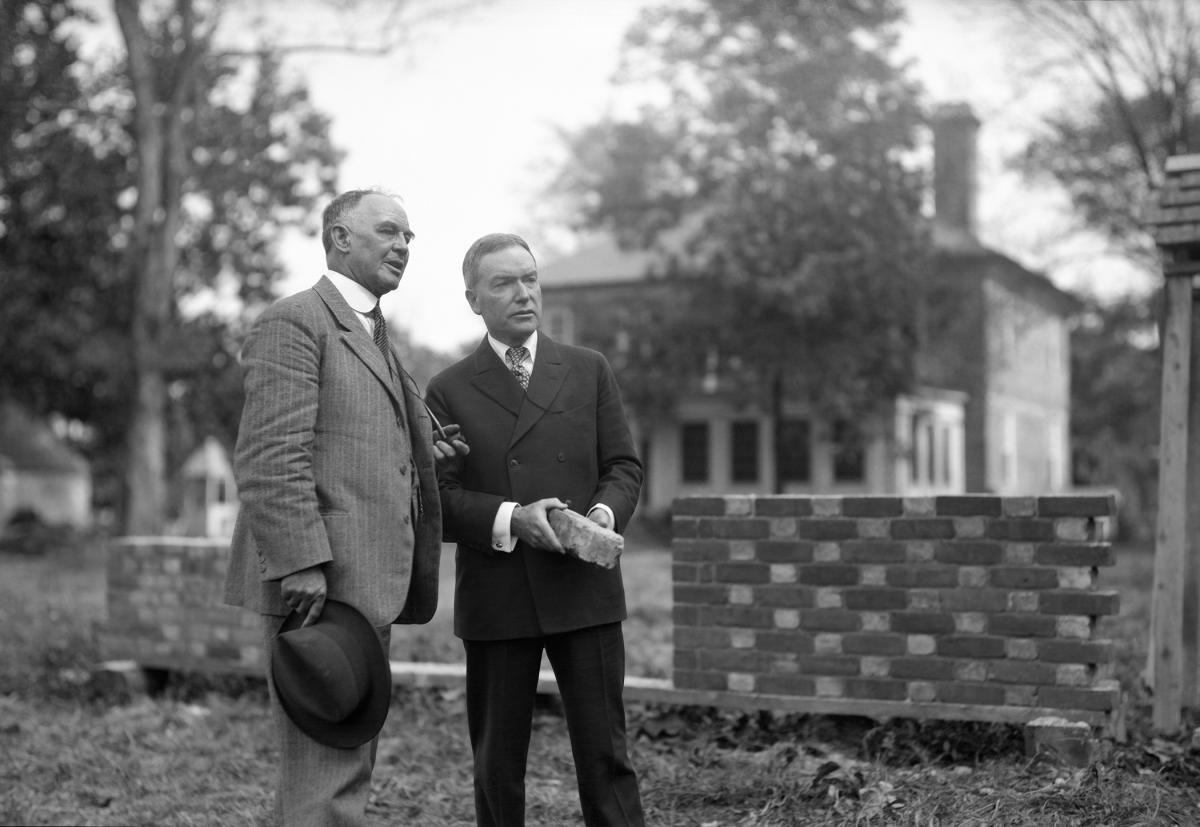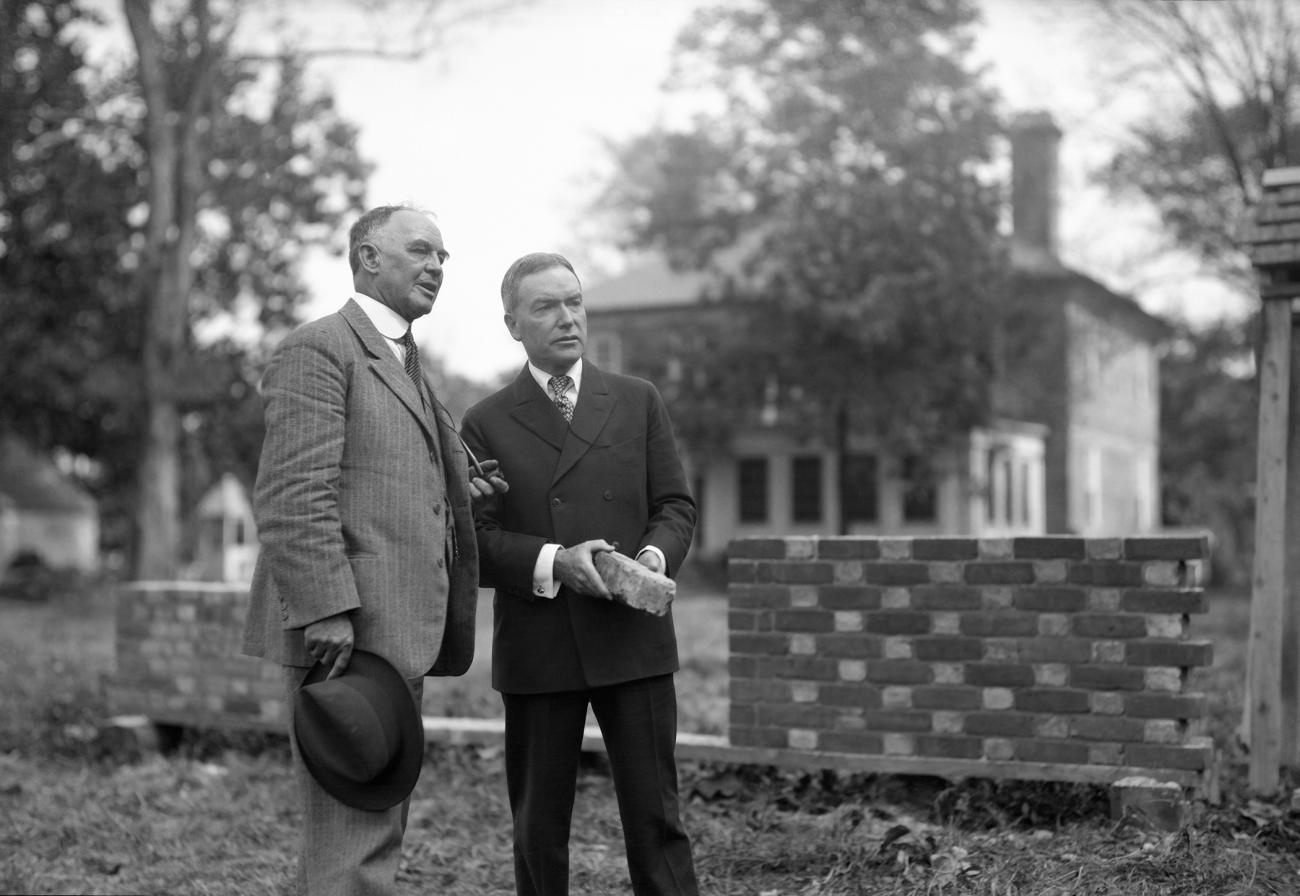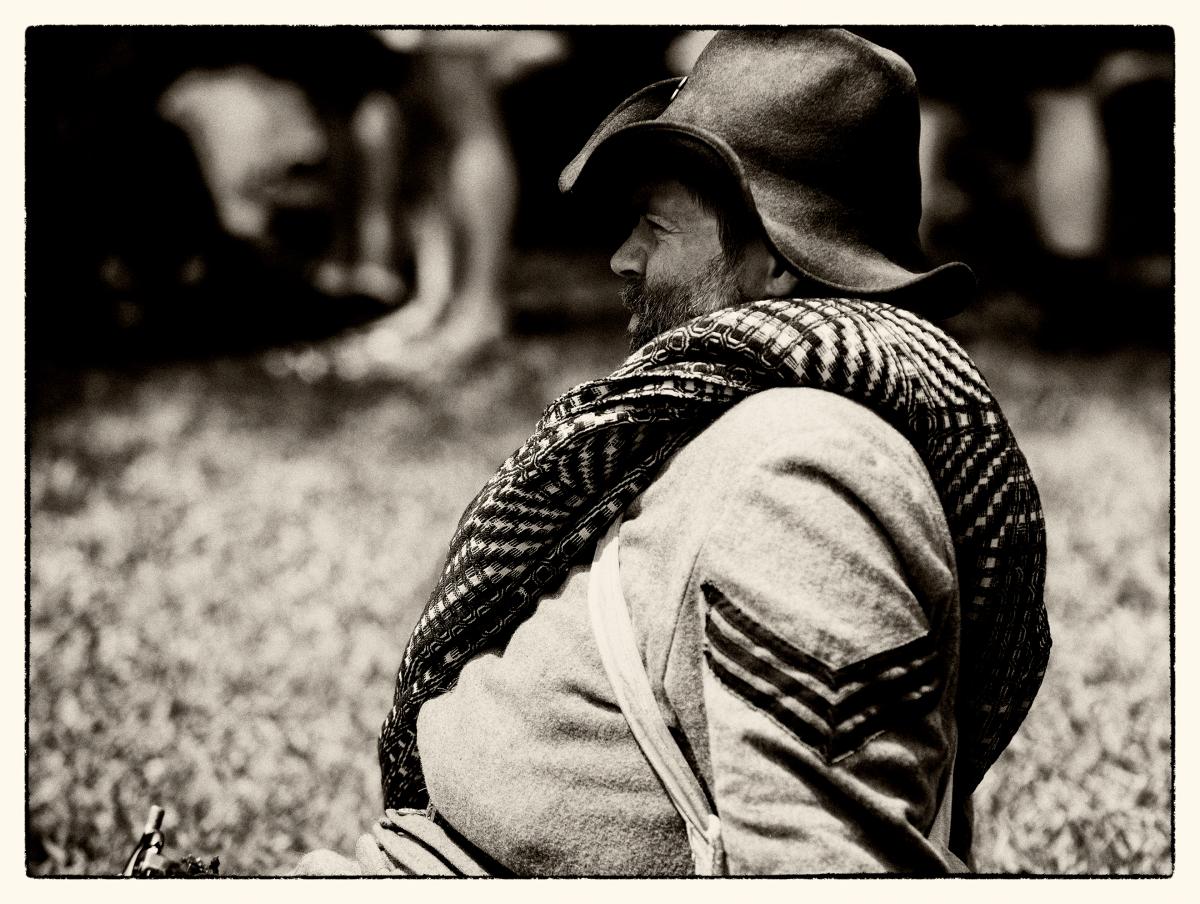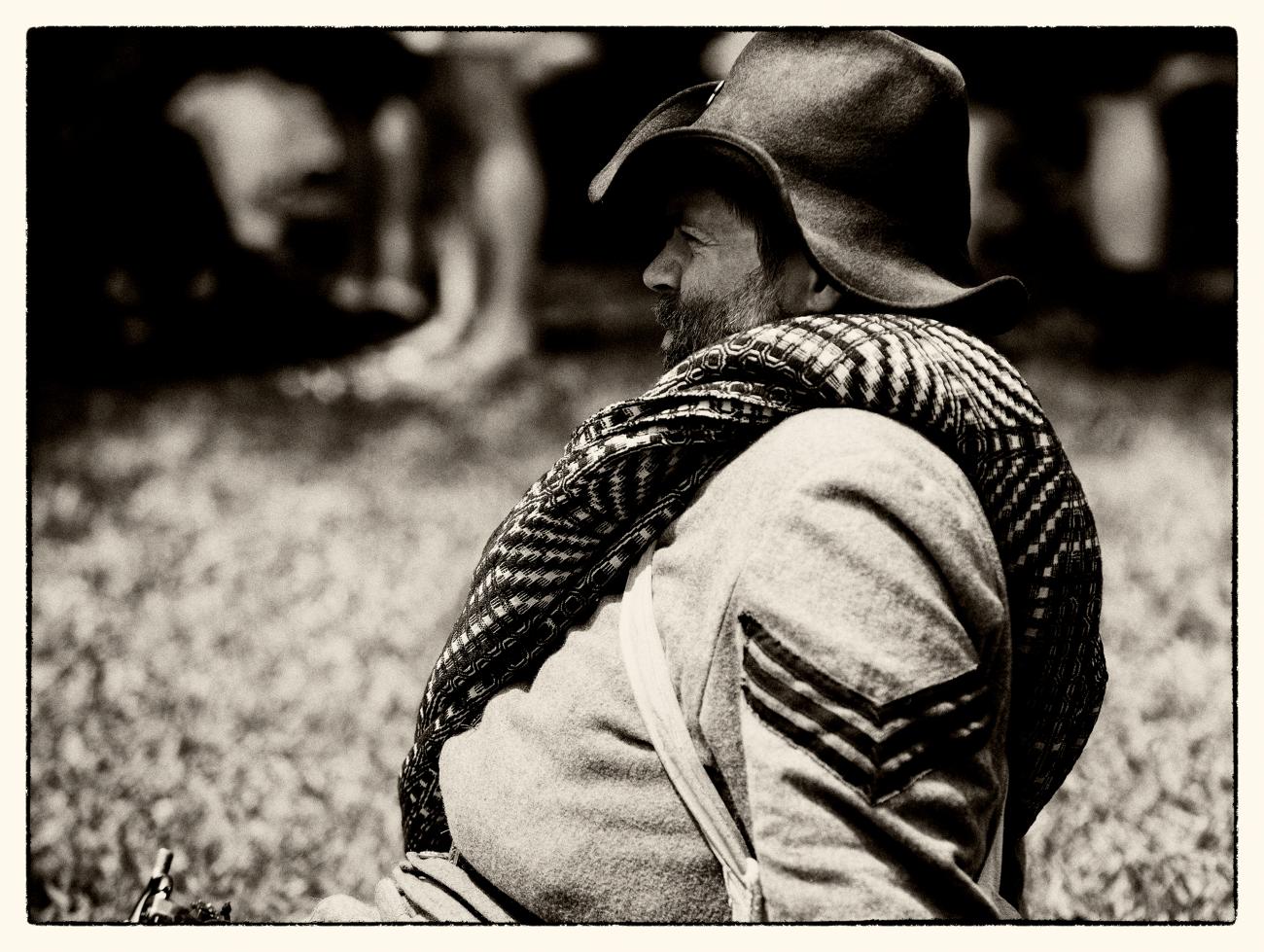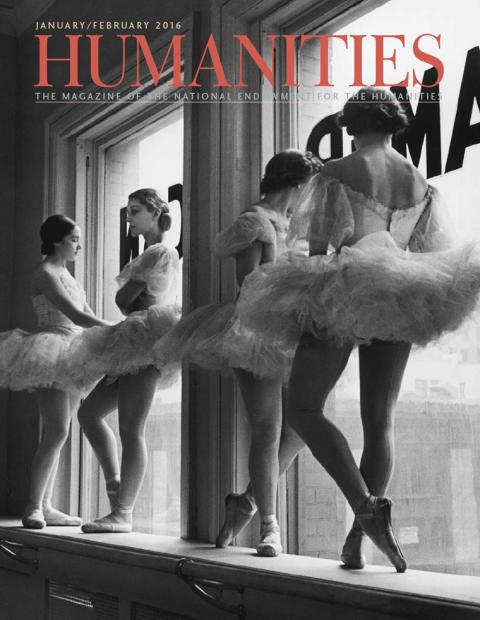A few years ago, while I was visiting a writers' retreat in central Virginia, something strange happened. I saw ghosts. This happens a lot in Norwood, a tiny crossroads 45 minutes southwest of Charlottesville, lolling between the Blue Ridge mountains and the James River. It is like a lot of places in Nelson County and the deeper reaches of the Shenandoah Valley, hamlets where the temporal veil blurs and the distant past seems more vivid than the chronological present. As I jogged through the stillness at first sunlight, a rising mist revealed collapsing clapboard structures that have been clutching these hills since the 1830s. The steel-truss bridge spanning the Tye River looked singular and stalwart, as it must have in 1916 when the Virginia Blue Ridge Railway first steamed through.
The veil blurred even more inside the three-tiered antebellum home where I was staying, these days a writing retreat called The Porches. On my second morning, I was marveling at a throng of hummingbirds outside a window in the kitchen when I noticed an old bound volume lying on a table. It was the Norwood recollections of Wallace Ribble, who had lived in this home from 1875 to 1883. Among other things, Ribble described how he, his older siblings, and their cousins played on a large outcropping of rocks near a gate at the bottom of the front yard. Sitting on the front porch, I saw them through the mist in their knickers and pinafores, riding the bouldered back of the great “elephant,” while feasting on “black walnuts, salt and blackstrap molasses.” I could make out one child in particular, a dark-haired boy who slunk around with a feline ferocity in his eyes. Later that night, once everything grew quiet and still, I crept downstairs to the parlor, hoping to read before bed. But I didn’t want to interrupt Ribble’s Uncle Frank, who spent so many nights in this room by the hearth, regaling his family with Civil War stories while the “amber on his moustache” glistened from tobacco juice.
Was I really seeing ghosts? I’m still not sure. Ever since my first trip to Colonial Williamsburg at age nine—16 visits ago—I’ve dug breathlessly in the dirt near foundations of any Colonial-era ruin I could find, hoping to unearth some relic that would connect me to the long-dead person who last touched it.
This much I did know: The morning I left Porches I came face to face with a roadside marker in front of an old brick church that began “Boyhood Home of Rev. Dr. W.A.R. Goodwin (1869–1939) ‘Father of Colonial Williamsburg.’” For most people, including those who have been to Colonial Williamsburg, or CW, this knowledge wouldn’t count for much. The tourist experience at CW doesn’t devote a lot of time to Goodwin, and, really, no more than a few regional historians know who William Archer Rutherfoord Goodwin was. But when I looked upon that granite-colored sign etched with letters in black relief, an inner shifting of archaeological proportions occurred.
Even though I was running behind schedule and had to get home to my wife, eight months pregnant with our first child, I turned my car around and rushed back to Porches. I asked Trudy Hale, Porches’ owner, if she knew where Goodwin had lived.
“Right here,” she said. “His family first lived here when they came by packet boat from Richmond. His earliest memory was of being carried to his home in a blanket during a snowstorm.”
Right here?, I wanted to say. Why isn’t there a banner draped across the house announcing this? Instead, I asked, “So, where was his real home?”
“Just up the hill a few feet,” said Trudy, a Memphis native who teaches writing at a nearby college and edits an online literary journal.
“You mean his home is still there?” I asked, while hairs on the back of my neck stood up.
“What’s left of it,” she said, shrugging.
From what I could see, Trudy was right—there wasn’t much of a house there anymore, and what was left was shrouded behind vines and shrubs.
On the drive home a disturbing realization hit me. As much as I still loved making pilgrimages to CW, part of me didn’t want to go back. It remains a very special place, a wonderful monument to the American founding and the Colonial era. Built in what was once the capital city of Colonial Virginia, CW is the largest, most extensive interpretation of early American history (or living history, for that matter) in the world. Its living history programs, museums, archaeology, digitally interactive school curricula, and many other offerings make up perhaps the greatest concerted effort to enchant visitors with some of the earliest chapters of the American story. And yet, for a few years now, I have wished I could plumb beneath the scripts of the popular living history skits’ Revolutionary City to something more essential, more distillate to the meaning behind the most beloved living history destination in the world. That is how I came to realize that I had to exhume the dead Episcopal priest who pulled off perhaps the greatest, most unlikely historical preservationist feat in U.S. history. I had to find Goodwin.
Last July, I went back to Porches to see if there were any answers in the red clay hills of Goodwin’s Nelson County home. During a walk, I ran into Trudy and her dog and asked her if Goodwin’s first school was still standing. “You mean the old shoe shop?” she asked. “That’s across the road from Porches behind a few vines.”
A few vines turned out to be an Amazonian-dense thicket of brush and scrub trees guarded by black snakes. When Goodwin and his Ribble cousins attended, it was a bare room in a log structure, but now it’s a weathered clapboard box, collapsing in on itself like a rotting jack-o-lantern.
Goodwin’s teacher Molly Roberts taught local children in part of the single-level building occupied by the Matthews family, while Mr. Matthews ran a shoe shop at the other end of a long room. Goodwin’s fondest school memory was “the ambition which came to me in my boyhood days to copy [Miss Roberts’s] well rounded and beautifully slanted letters,” he wrote in a 1924 self-published memoir excerpted in journalist Dennis Montgomery’s biography, A Link Among the Days: The Life and Times of the Reverend Doctor W.A.R. Goodwin, the Father of Colonial Williamsburg (1998). Throughout his adult life, Goodwin’s rococo signature was a distinct calling card.
At a very young age, Will or Willie, as he was called, took from the Matthews home a consciousness of the power and beauty in language. This was someone who, as an adult, grabbed people by the lapels when he spoke, and, when delivering a sermon, leaned so far out from the pulpit that he’d nearly topple over as his words hurtled forth. He put all of his anxious passion into language, and bet everything on it.
He also took something else from the cobbler’s home. As Wallace Ribble wrote in his recollections, Goodwin, his siblings, and their cousins weren’t allowed to play with the Matthews boys. Ribble and his siblings were “deprived of the delightful company of Harry and Alex because they were not F.F.V.’s [First Families of Virginia], and were not of otherwise gentle breeding.” As Ribble observed, “Who your parents were, often cut more ice than what you were.”
I walked back across the road (it’s really more of a long driveway), hoping to get a better glimpse of Goodwin’s home than I had the first time. The long-vacant house, which the family called Altavista, was in worse shape than the Matthews shoe shop. Walls that held fireplaces and chimneys still stood, but much of the home looked as if Sheridan and his Union cavalry had trashed it during their Shenandoah rampage of 1864. Apparently, the present owners have little interest in doing anything to save it. Trudy told me that when she opened Porches in 2006, the house was still standing. Photographs from recent years reveal a multi-gabled roof with severe pitches, dormers, a wide front porch, and poplar clapboarding. A Works Progress Administration of Virginia Historical Inventory of 1937 lists three chimneys for the circa-1830s home, seven rooms, four-inch pine floorboards, and plain and carved cornices. It looked like the Hansel-and-Gretel-style cottages one sees splashed across the pages of Country Living magazine.
For all of its charm, the home belied a deeper, hidden truth: The Goodwins were poor. Like the Matthewses, the Goodwins knew about deprivation and suffering. Ribble quotes Goodwin’s father, Frank, from a letter he wrote to his mother during the 1880s: “We have nothing for breakfast, warm-over what is left for dinner, and go to bed before supper.” When Goodwin attended Roanoke College with cousin Frank, the two were booted from their dormitory for cooking their meals in a small tin stove they kept hidden beneath a bed. Homeless, they squatted in a vacated college office and tapped a fire hydrant at night for water.
Frank Goodwin had been a junior officer in the Confederacy and had coowned Richmond’s Vulcan Iron Works with an uncle, and his mother, Letitia, was daughter of a wealthy, land-owning merchant. She was so foreign to their new lifestyle in Nelson County that she once asked her husband “which of their cows gave buttermilk.” Their financial woes were largely a result of Frank’s chronic ill health, brought on, apparently, by the war, and his indifference to farming. (He came to Norwood on the advice of doctors who recommended a bucolic environment and the close proximity of his physician brother-in-law.) The Goodwins embodied the caste-conscious, genteel poverty that afflicted so many Southern families after the Civil War.
Before I left Norwood, Trudy asked if I wanted to see Christ Episcopal Church at the bottom of the hill. She and a friend had bought the church to save it from the wrecking ball when it closed in the mid 1990s. As it turned out, this was where Goodwin received the training that changed his life. His mother served as church organist and superintendent of the Sunday school, and his paternal grandfather as well as a fistful of uncles and cousins all pursued the Episcopal ministry. Perhaps no one exerted more influence on young Will’s ideals than his paternal grandfather, an ex-pat New Englander who practiced a blend of Southern fervor with severe Yankee rectitude. Goodwin jokingly described it as a “combination of rheumatism and St. Vitus dance.”
When I opened the church door, a rush of hot air escaped, as if I had opened a long-sealed tomb. In a way, I had. The original pews and pulpit furniture were still there from when the church opened in 1845. An open Bible lay on the pulpit still draped with a pulpit fall from the mid 1990s. In the foyer, names of such locals as “Boles,” “Tyler,” and “O’Brien” were stickered to small mailboxes from the days when the church doubled as a post office. It was stifling hot. As I left, I noticed two gravestones fitted into the outside brick wall. I kneeled down to read them—one memorialized Goodwin’s brother Frank, who died in infancy and the other his sister Mary Lacy, who died at age five.
Given the struggles of his early life, perhaps it was no surprise that one of Goodwin’s favorite childhood memories was of once prancing around, wearing a mask, taken from the face of a skinned cat.
The myth surrounding Goodwin is that his passion for historic preservation germinated after a brief stint working cornfields in Nelson County. With his earnings, he purchased his first book, subtitled Buried Cities Recovered or Explorations of Bible Lands. But journals from his college days talk more about girls, studying Latin and law, and whether to continue his religious studies. It wasn’t until he first arrived at Williamsburg in 1903 to become rector of Bruton Parish Church that he developed a passion for Williamsburg history.
At Bruton, Goodwin inherited a restoration project of the venerated church—the building dated to 1715—that his predecessor, Reverend William T. Roberts, a combative, divisive priest, had already started. Decades of fallen fortunes among parishioners had led to dramatic, severe changes to the church’s Colonial exterior and, especially, its interior, moving Roberts to describe it as “sadly mutilated and defaced.” Goodwin found the project moving along sluggishly and embraced it with locomotive tenacity. He was guided by J. Stewart Barney, a prominent New York architect who agreed to undertake the restoration design gratis as long as it was restored to its Colonial appearance. The combination of Goodwin and Barney resulted in a Bruton that not only regained some of its lost Colonial mien but also became a showpiece of the 1907 Jamestown Tricentennial celebration attended by Gilded Age barons and President Theodore Roosevelt.
In 1909, Goodwin was promoted to head a parish in Rochester, New York, but in three ways his experience in Williamsburg had left him a changed man. First: This Bruton restoration (there would be another in the 1930s) required Goodwin to fundraise, and he traveled the East Coast, spreading awareness and interest in Williamsburg’s past, as well as honing what he quickly discovered were his P. T. Barnum-like sales skills. Second: A fire kindled in his belly, fueled by what he would come to believe were crucial, defining values that Americans needed to relearn but that were buried in the rubble of the Capitol’s foundations. Third: Goodwin developed close ties with women in Bruton’s congregation who, like the old Dutch dames in Washington Irving’s Catskills, were the curators and, most important, the conservators of the city’s spirits. This included Cynthia Coleman, who founded, along with her friends, what became the Association for the Preservation of Virginia Antiquities, which repaired old gravestones, acquired the nearby eighteenth-century Powder Magazine (where gunpowder and munitions had once been stored), and took custody of the Colonial capitol building’s crumbling foundation.
In a letter to his son-in-law, Barclay Farr, Goodwin later recalled how “the older people of Williamsburg, many of whom lived in the Colonial houses, were largely responsible for the dream of the city restored. . . . They were constantly peopling the houses with fascinating ghosts. . . . The ghosts of the past haunted the houses and walked the streets at night. . . . They grew as they were told on moonlit verandahs or on winter nights by those gathered around a blazing fire whose flickering light illuminated the faces of ancestral portraits which still graced the Colonial walls. . . . Letters were found which had lain long hidden in secret drawers or in hide-covered trunks. . . . Palace ballroom was again peopled by the ‘lovely and the beautiful.’ . . . The music of the minuet and the fragrance of mint again filled the ‘Hall of Apollo’ in the Raleigh Tavern.”
This wasn’t just mawkish Southern storytelling. Goodwin grew to believe, as he once wrote to a ten-year-old girl, that you could “shut your eyes and see the gladsome ghosts who once made these places their home. You can learn to call them back.” Indeed, he said, “You can train yourself to hear what they have to say.” For Goodwin, these spirits also represented something else, something more pressing: They offered important lessons to modern-day America, a country derailed by the Great Depression and flooded with new immigrants who didn’t speak the language. Montgomery wrote that Goodwin wanted all Americans “to find inspiration not only in the faiths of their fathers but in the whole legacy of the people he called the nation-builders.” For Goodwin, this meant, as his secretary Elizabeth Hayes Goddard recalled, the “principles of freedom and democracy as laid down by the early Virginia leaders.”
Hayes Goddard accompanied Goodwin on their first walks when he returned to Williamsburg from Rochester in 1923 to head the College of William & Mary’s endowment campaign and to teach there. In the 14 years since he had been away, Williamsburg had morphed from a sleepy bucolic backwater of old clapboard homes, where oyster mongers hoisted customers’ orders up to their windows in tin cans, into a bleak modern landscape. Corrugated iron buildings and neon signs lined the main thoroughfare, Duke of Gloucester Street. An automotive repair shop called “Toot-an-Kum-In” squeezed in next to the old Powder Magazine, and many old buildings had become so dilapidated that it was common to see squatters inside holding umbrellas during rainstorms. As Hayes Goddard observed of her boss, he “sought to avoid the necessity of noticing the telegraph poles, the false-front shops, the abhorrent gasoline stations.. . . With half-closed eyes and pipe alight he had visions, I believe, of another day and he talked only of the colonial past.”
I returned to Williamsburg in March, hoping to find some of these ghosts, who, I assumed would not be around in summer, when all civilized beings leave town to escape the oppressive heat. I arrived at dinner time and headed for Chowning’s Tavern, one of my father’s favorite places to eat when he came to Williamsburg. In his honor, I was going to order a biscuit with Smithfield ham. It was my father who introduced me to Colonial Williamsburg. He took our family there on our first trip south of our Baltimore home when I was nine. Among many hazy memories, I clearly remember how at home my father seemed. This was a man who wore travel like a hair shirt, a chafing penance to endure. Yet in Williamsburg the fear fell from his eyes, and he strode through the old city with an abandon reserved for our kitchen, where he cooked in his stained undershirt and boxer shorts.
Years later, I learned that my father had first visited Colonial Williamsburg as a ten-year-old in 1938, only four years after the restored city first opened. His Uncle Izzy had read about the early restoration efforts in National Geographic magazine and persuaded his family to visit. This was no small thing during the Depression, especially for his parents, struggling Jewish immigrants who rarely ventured outside of gritty Elizabeth, New Jersey. Everything about Colonial Williamsburg seemed exotic, especially the stay at a guest house. “I remember coming down the stairs for breakfast to a table covered with biscuits, Smithfield ham, gravy. I had never tasted anything like it,” he told me.
Chowning’s was closed, sadly, so I headed over to the College Delly for a Greek salad. Back in 1974, my father took us to this restaurant when, if memory serves, it was a low-budget Italian eatery, and I hoped that I could channel him, if only momentarily in this Greek-influenced diner. I should have known better. My father never set foot in a place that served baklava. Afterward, I headed over to Bruton Parish for one of its frequent, free concerts. A small high school ensemble from Tennessee was performing a series of solos by candlelight, and someone even attempted a few pieces on the large Bruton organ. Despite the frequent squawks and squeaks, it was easy to close my eyes and imagine that it was Peter Pelham, Bruton’s beloved eighteenth-century organist and keeper of the public gaol who often brought prisoners to church to pump the organ while he gave concerts.
After the concert, I killed some time at a local gastropub and then headed over to the William & Mary campus. When famed newspaper columnist Ernie Pyle visited CW in 1936, he took Goodwin up on the offer he made to all journalists: to experience the old city with him when it was at its most authentic, late at night. Pyle later wrote that it was when Goodwin “was alone, in the starlight, strolling in the night, talking with the ghosts, that he learned about Williamsburg.”
I began my divination in the college yard between the renowned Sir Christopher Wren and Brafferton buildings, facing Duke of Gloucester Street. This seemingly unremarkable spot was where Goodwin stood with J. Stewart Barney in 1924, both of them feeling their backs against a wall. Goodwin had just successfully raised $100,000 for the construction of a new gymnasium for the financially foundering college and wanted its appearance to jibe with the aesthetic of the two buildings facing them. (The Wren Building, constructed between 1695 and 1700, is the oldest college building still standing in the United States; Brafferton was constructed in 1723 to educate and Christianize local Native American boys.)
William & Mary’s president J.A.C. Chandler insisted that the new gym have a modern appearance because it would be cheaper, but, once again, Stewart held firm that he wouldn’t do the work unless the building mirrored its Georgian surroundings. It was a quixotic stand for historical sovereignty against an overwhelming tide of modernity. I could see Goodwin chewing on his briarwood pipe, gazing down Duke of Gloucester Street at the neon signs, telegraph poles, wires, and corrugated iron buildings that made communing with his beloved spirits so painful.
Then Barney, too, looked down the street that once saw the likes of George Washington, Patrick Henry, John Marshall, George Wythe, Thomas Jefferson, and George Mason negotiating its ankle-high dust and yellow mud on their way to the Capitol or the college. Both men wondered: What could possibly be done to preserve the dwindling number of Colonial-era buildings?
This was when Barney made a suggestion that would have not just historical, but existential import for the college and, especially, the fading Colonial capitol. In his biography of Goodwin, Montgomery says that “Barney advised Goodwin to find a rich man to buy the buildings, renovate them for student and faculty housing, endow them, and deed them to the college.” Colonial Williamsburg began as a way to shore up and expand a once-dignified college that had fallen on hard times.
From there I walked along Jamestown Road to the Phi Beta Kappa Memorial Hall. I thought about the myth perpetuated about Goodwin and John D. Rockefeller Jr., the philanthropist and Standard Oil scion who would eventually foot the bill for the entire restoration. The brief yarn is that Goodwin met Rockefeller at a Phi Beta Kappa dinner in New York City in 1924 and persuaded him to invest in the unlikely project on the spot. The reality is that it became a cat-and-mouse game because Rockefeller, Goodwin learned after sending him a long, carefully crafted pitch letter, already had his hands full in helping colleges, namely what is now Hampton University, a historically black college two hours south of Williamsburg. Besides, what Goodwin was proposing, vague as it was, clearly was no small undertaking. It was, to be exact, brazen beyond reason. By the time of Rockefeller’s death in 1960, he had spent $68 million on the restoration (a figure which clearly would total in the hundreds of millions today). He did persuade Rockefeller to say he would visit Williamsburg, which led Goodwin to needle him for years afterwards, until the whole courtship nearly dissolved. Dejected, Goodwin turned uncharacteristically dark and blamed himself for this dead end.
Goodwin pulled himself out from his despair the only way this boy raised in the hardscrabble Blue Ridge knew how. As he told Vernon Geddy, a local lawyer and confidant who handled the legal paperwork for the restoration, “When things are hopeless is when I really begin to work.” He walked into his office in Wren that June, according to Elizabeth Hayes Goddard, and dictated a letter to her. “It was to be ‘a letter,’ he said, ‘that could have consequences so far-reaching that they could be of national value for all time.’” Goodwin paced back and forth, Hayes Goddard recalled, puffing on his pipe with “the look of the pioneer in his eyes.”
The letter was addressed to Edsel Ford, heir to the Ford Motor Company fortune and monopoly. Goodwin told Ford that he wanted his father to “buy Williamsburg. . . . No man yet has had the vision and courage to buy and preserve a Colonial village and Williamsburg is the one remaining Colonial village which any man could buy.” He wrote to Ford—and this is where you can imagine his imposing Piedmont baritone taking over—that “you and your father are at present the chief contributors to the destruction of this city.” He was speaking of the new concrete roads, the garages, and gas stations that were “fast spoiling the whole appearance of the old city.”
The scathing pitch letter was secretly forwarded to a newspaper editor in Detroit, and from there it went viral. Goodwin came under attack for “huckstering off [the Old Dominion’s] ancient capital to an outsider, in order to get a flivver imitation of departed glory,” an editor ranted in the Baltimore Sun. The scolding responses only strengthened Goodwin’s resolve, according to Hayes Goddard.
In 1926, the clouds lifted. Goodwin got word from Dr. James E. Gregg, Hampton’s president, that Rockefeller wanted to see the old capital on his way back from visiting Hampton. He was finally coming. The visit proved fruitful. Although Rockefeller didn’t commit to anything, he said he favored that “some means be found to save the old buildings from further destruction.” He also asked if any detailed plan had been drafted. Upon hearing this, Goodwin set to work, seven days a week, 16 hours a day.
In July, Goodwin became rector of Bruton Parish for the second time. The departing rector told him that the George Wythe house, which sat next to Bruton and was considered one of the grandest old homes still standing, was for sale. Goodwin lobbied his vestry to buy the home, insisting they could use it for additional church space. The local chapter of the Colonial Dames of America intervened and raised the funds for a down payment. Soon afterwards, he immersed himself in Colonial architecture, seeking out national authorities on the subject.
The plan he ultimately presented that November to Rockefeller’s right-hand man, Colonel Arthur Woods, detailed a restoration that included the entire city, not just the college. And it called for Williamsburg to be transformed into a “great teaching center” of founding principles.
I arrived at Phi Beta Kappa Memorial Hall and stopped in front of it. The building, which honors the prestigious academic honor society founded by William & Mary students in 1776, is the main performing arts complex on campus. It was quiet on this side of campus, but a few lights were on inside the building, and the tinkling of a piano took center stage for a few moments. If there were a few buildings in Colonial Williamsburg that held happy memories for Goodwin, surely this was one of them (the present building replaced the original, which burned down in 1953). It was here, during a formal dinner, that Rockefeller gave Goodwin the green light to commission architectural renderings for the restoration of the Wren building. It was a cautious foot in the water, but, as far as Goodwin was concerned, it was all the splash he needed. As Goodwin later wrote, “Mr. Rockefeller then stated that he would associate himself with the endeavor to restore colonial Williamsburg!”
From the start, Rockefeller’s organization envisioned a visitor experience shaped by Virginia hospitality and twentieth-century sensibilities. This meant heated buildings, indoor plumbing, restaurants, a recreated merchants’ square, fife and drum corps, and such aesthetic touches as tree-lined streets devoid of chickens and their scat. They wanted the restoration to pay for itself. Ever the purist, Goodwin chafed at such comforts and feared they would taint the “spiritual endeavor” he envisioned. Dennis Montgomery adds, “He wanted you to feel like you were on hallowed ground and to leave feeling inspired and more committed to democratic values.”
Goodwin was appointed the local director of the entire operation, which meant that not only was he still acquiring properties, but he was also juggling the architects, builders, lawyers, and everyone else working some angle of this increasingly complicated operation. Rockefeller made it clear that the acquisition of homes and buildings, the title and deed work, the negotiations, the interfacing with locals at town meetings, all of it had to be handled by Goodwin and to leave Rockefeller’s name out of the discussion—until he said otherwise.
By early 1930, Montgomery says, the restoration project nearly folded. “Everyone was pursuing different goals, and no one was talking to each other about what they were doing.” Over the next five years Goodwin’s role was exponentially diminished to the point that—although he was still a trustee—he wasn’t being invited to staff or trustee meetings. Kenneth Chorley, the restoration’s vice president and ultimately president, grew so annoyed with Goodwin griping about the commercialization of Colonial Williamsburg that Chorley refused even to let Goodwin use the foundation’s stationery, which Goodwin helped design.
Montgomery says that Goodwin’s relationship with Chorley and his colleagues grew so “acrimonious” toward the end that, after Goodwin’s death, Chorley “asked Goodwin’s son Rutherfoord to burn Goodwin’s correspondence with the president’s office to avoid embarrassing himself and the institution.” Despite the bad blood, Goodwin worked hard until the very end to nurture one relationship—that with Rockefeller. Goodwin’s family, says Montgomery, remained “distant from Colonial Williamsburg until the 1990s.”
Before heading home, I wandered over to Bassett Hall, one of the few destinations in CW I had never visited. During the early part of the restoration Rockefeller and his wife, Abby Aldrich Rockefeller, lived in this mid-eighteenth-century frame house tucked back off the road at the edge of the historic area. It was closing time—I could see docents walking to their cars—but that wasn’t a problem. I hadn’t come to tour the home.
I followed a long path that serpentined over some of the property’s 585 acres of gardens and rolling woodlands. I wanted to find the site of the Great Oak. On November 27, 1926, days after Rockefeller conceded serious interest in restoring the city, Goodwin showed his new partner the tree that stood 80 feet tall with a canopy 120 feet around, still bearing its sparkling autumn foliage. The tree was more than 300 years old when it toppled during a 1998 ice storm.
It was a tree and a spot that so entranced the philanthropist that he later wrote to Goodwin, “I have thought many times of that marvelous oak tree you took me to see and of the fall woods into which we looked. What a wonderful picture it was.” The moment seemingly radiated for the otherwise shy and reticent Rockefeller, as well it should, for this was the beginning of not just a partnership but a heady preservation effort the likes of which no one had ever seen. Rockefeller showed a friendly, almost childlike deference toward Goodwin, whom he asked, “If I come back some day, can we bring our lunch down and eat it under the oak tree?”
Soon, it began to grow dark, and I sat down on an expanse of grass near an oak sapling, behind a small worm fence where the original oak had stood. From my backpack I pulled leftovers, Stilton and jaegerwurst, and ate a picnic dinner. Spring peepers and crickets commanded the soundscape, which was disturbed only briefly by the distant sound of the last car leaving the parking lot. Alone, I closed my eyes and trained my ears to the deeper, nocturnal script: the stories the spirits still had to share.

